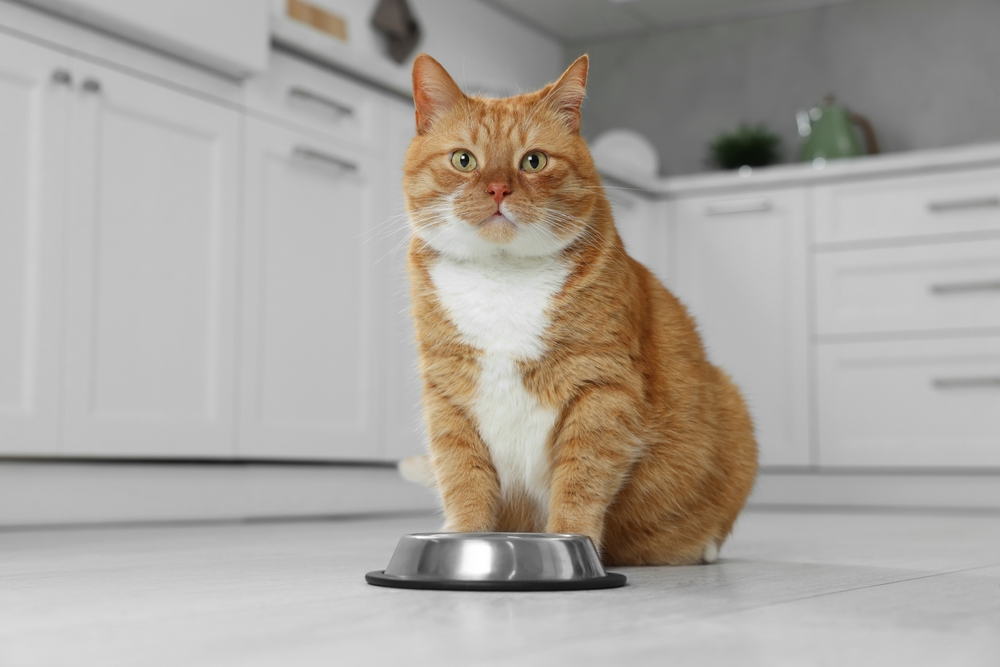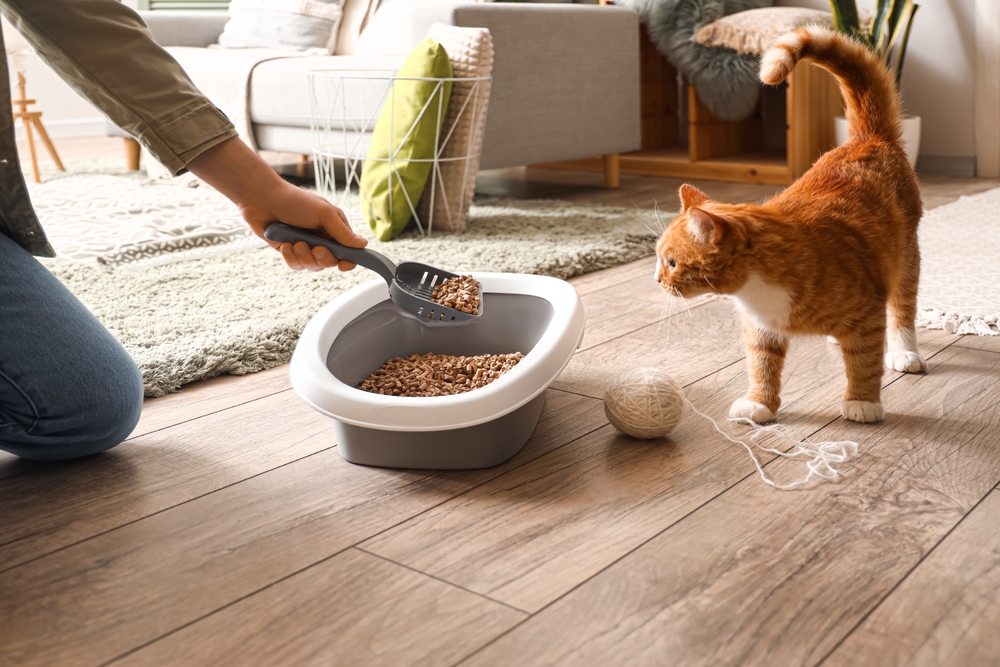Did you know that most felines hate the smell of citrus? If you ever wondered if they’d be interested in sharing a mandarin with you, well, they are unlikely to nibble on your orange.
Even so, as a pet parent, it’s fairly important to understand whether this fruit is safe for your beloved feline.
After all, you never really know when orange might be an ingredient in a food item, or if a curious cat decides to take a taste.
So the question is, are cats allowed to eat oranges? Well, we asked three veterinarians, and here’s what we found out!

Can cats eat oranges?
No, felines shouldn’t eat them. This includes any kind of orange, really, including navel or mandarin, as Jenna Whatley, DVM, Director of Ecosystems at Thrive Pet Healthcare, explained.
As it turns out, oranges, just like any other citrus fruits, have a specific compound that can be harmful to cats, such as:
- essential oils, such as limonene and linalool. These can be easily found in the peel, and they can cause digestive upset and reduced central nervous system response.
- Psoralens can be found in the peel, flesh, leaves, and stems. All these compounds can cause extreme sensitivity to the sun, which could then result in redness, irritation, and burning, especially if your kitten spends enough time outside.
- Citric acid, which is mostly found in the peel and flesh. This particular substance can deeply irritate a cat’s gastrointestinal system.
Eliza O’Callaghan, DVM, and managing veterinarian at Small Door Vet in New York, noted that the orange peel and seeds have much higher concentrations of such harmful substances than their flesh, which makes them a huge risk to cats.
But the good news is that pet parents don’t really need to worry about their cats eating oranges.
In fact, cats are naturally repelled by the smell of citrus. This also makes it unlikely they would go anywhere near an orange, let alone actually consume enough to cause them harm.
Nutritional content of oranges
Oranges generally provide a series of benefits to humans. They are quite rich in vitamin C and potassium, providing enough dietary fiber for better digestion, and containing natural sugars that provide energy.
Even so, cats don’t really reap the same advantages from such a fruit.
“Cats don’t really need to consume foods with vitamin C, since their bodies can easily synthesize it on their own,” as O’Callaghan stated.
As a matter of fact, Whatley added that providing enough supplements or foods that are already rich in vitamin C can lead to urinary issues, like calcium oxalate stones.
On a very similar note, Rhiannon Koehler, DVM, MPH, a veterinary expert at TeachMe.To, and also a contributing writer for The Spruce Pets, added that the dietary fiber that sustains human digestion also provides little benefit to cats, since their carnivorous digestive systems aren’t truly built to process plant-based fibers so effectively.
And as far as the natural sugars in oranges go, they are neither too suitable nor necessarily more nutritious.
Whatley also added that consuming way too much sugar can easily cause your cat’s blood sugar to spike, which is especially dangerous for cats with pre-diabetes or even diabetes.
And as obligate carnivores, cats are known to thrive on diets completely centered around high-quality animal proteins, not necessarily fruit. This also means there are zero benefits to offering your cat oranges.
Risk of feeding oranges to cats
As doctors O’Callaghan, Koehler, and Whatley explained, if your cat eats a chunk of orange, you might notice symptoms like drooling, vomiting, diarrhea, depression, lethargy, and dermatitis.
O’Callaghan explained that all these effects are generally quite short-lived and mild, but in some rare instances, ingestion or even contact with the peel or seeds could ultimately lead to more pronounced effects.
Moreover, if your cat displays persistent symptoms or unusual behavior, contact your veterinarian as soon as you can, or even take your cat to an emergency pet clinic.
Safe alternatives to oranges for cats
As oranges are unsafe for cats, there are still other fruits that are much safer to offer as occasional treats.
But these should only be given in small amounts, as fruits aren’t necessarily an important part of a cat’s diet, and excessive amounts can lead to health issues.
To keep a balanced diet, treats, fruits included, should make up no more than 10% of a cat’s overall food intake.
Before you give your cat fruits, make sure you remove the seeds, pits, and peels, since they can pose choking hazards or even contain substances that could ultimately harm your cat.
Some of the safest fruits you can give to your cat include strawberries, apples, cantaloupe, bananas, watermelon, blueberries, cranberries, blackberries, mangos, and raspberries.

What about ham?
Have you ever wandered back into the kitchen, right after a family board game session, and noticed a couple of small bite marks on the holiday ham?
Well, is the likely culprit your feline? If the next thing you’re wondering is whether or not felines can eat ham, and if it’s safe and healthy for cats, let’s see what experts say.
Since cats are obligate carnivores, they need to eat meat to survive. However, this doesn’t mean that you should share your ham sandwich or add cubes of holiday ham to your kitty’s food dish.
Technically, felines are allowed to eat ham, but it shouldn’t be seen as a “safe choice,” as Whitney Miller, DVM, MBA, DACVPM, the chief veterinarian at Petco, explained.
“Even if some think that small amounts of ham are perfectly safe, there’s really no way to know what amount any given cat can actually tolerate, so it’s really best to avoid altogether and opt for better alternatives,” as Miller added.
However, if you insist on sharing a piece of ham with your kitty, what you want is to make it yourself using cat-safe ingredients.
“Well, the safest option is definitely to give them ham that has been prepared by the owner,” said Janae Saffold, DVM, a veterinarian at VCA Bay Hill Cat Hospital in Orlando, Florida. “This way, we know very well what ingredients are inside.”
According to Rebecca Greenstein, B.Sc., DVM, the veterinary medical advisor for Rover, it is fairly important to give ham to your feline with “extreme moderation.” Any ham you decide to share with your kitty needs to be only plain, cooked, and unseasoned.
Potential health risks of ham for cats
A cat’s optimal diet also includes plenty of protein, moderate amounts of fat, as well as small amounts of carbohydrates. They also need vitamins, minerals, amino acids, and fatty acids.
At first, ham can seem like it meets at least some of these dietary requirements. But like any other processed meat, ham is also full of unhealthy components, such as salt, nitrates, and other preservatives and additives.
Depending on how it is produced, it can also contain ingredients that can be toxic, such as garlic and onion.
Yes, ham is a source of protein, iron, and B vitamins, but it’s also quite high in fat, which can further contribute to obesity in cats.
If you found this article useful, we also recommend checking:13 Surprising Things Your Dog Is Afraid Of, According to Pet Experts












